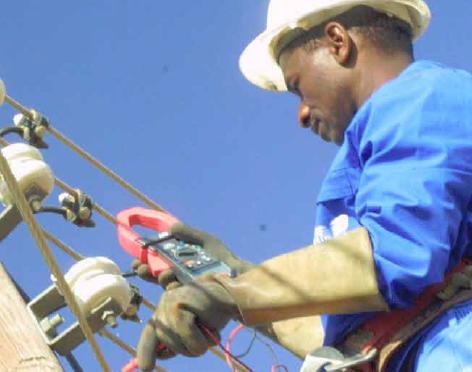
The African nation of Botswana is a shining example of how a country can use its natural resources wisely to reverse its fortunes, as Alan Swaby learns.
Observers from the West often fall into the trap of lumping all of Africa and its challenges into the same boat. We see violence and/or corruption in one place and project it to anywhere and everywhere. But despite being one of the poorest countries on the globe half a century ago, Botswana has used the revenue gained from its natural resources wisely to develop itself into a stable, democratic and progressive society.
It’s not a country without problems. The past few years have seen the economy go into the doldrums; but elections take place like clockwork and presidents don’t raid the piggy bank for their own personal profit. You have to go back to the time of the Boer War to record the last battle that Botswana was involved with.
At the time of independence from Britain in 1966, GDP was said to be US$70 per capita. Today the IMF estimate is $14,800. It’s a rise that has ridden on the back of diamonds discovered just two years after independence. Since then, beef has become the country’s second most important export; but the government is all too aware of the need to develop a broad-based economy. Tourism runs a close third and is sometimes second, beating beef exports in the country’s top three revenue earners.
At the heart of this economic advancement is the Botswana Power Corporation (BPC), a government owned body (or parastatal) charged with generating and distributing the country’s energy needs. In the 1960s, the power supply side was pitiful: a few isolated diesel generator sets served the capital city of Gaborone where the majority of the less than 600,000 population was located. In the early 1970s, the Selibe Phikwe Power Station was commissioned as the first coal thermal power station in Botswana. It was decommissioned in 1996 about 10 years after the commercial commissioning of the first of four units of the 132MW coal fired Morupule Power Station in 1986.
BPC’s director of corporate services, Alban Motsepe, has been with the company for over 30 years and as one of the longest serving staff members, he has seen many of the most important milestones. “Our development started,” he says, “with the installation of a power plant to serve the country’s first major copper mining project. It was an isolated 50MW coal burning power station about 350 kilometres from Gaborone. It later also supplied the town of Francistown about 100 kilometres north of Selibe Phikwe through a 66kV power line. It was only from around 1983 when Morupule power station was commissioned that it became part of a national grid.”
As well as diamonds and copper, Botswana is blessed with copious quantities of coal. It’s on top of one such deposit that the Morupule power station is to be found, 300 kilometres north of the capital. “Morupule has served the country well,” says Motsepe, “and has supplied the national grid which began to spread out during the 1980s. For a long while the 132MW station was more than sufficient for our needs and helped the inauguration of the Southern African Power Pool, where neighbouring countries could help each through short, medium and long term energy trading and power supply contracts.”
Currently, though, demand has outstripped supply. A tripling of the population, as well as more mining and industrial ventures, has led the planners to predict a new peak in demand in 2014. As such, the original Morupule plant has a near neighbour—Morupule B, which will put the first of four 150MW units of the total 600MW into commercial operation on the grid by January 2012. All four units are scheduled to be in commercial operation by December 2012.
“The original Morupule A is constantly monitored to ensure that it is not labelled a dirty plant,” says Motsepe. “To get access to the capital loans needed from the World Bank and the African Development Bank, we had to demonstrate that the Morupule B designs would conform to the latest and stringent technologies for reducing pollution and causing minimum negative impact to the environment.”
Eventually, Morupule B will replace the original plant but not until such time as the supply versus demand situation stabilises. During times of peak demand, BPC is obliged to supplement supply using expensive diesel generators—something that is neither economically nor environmentally desirable.
As a government owned resource, BPC has long had a monopoly on power supply; however, since 2007 it has implemented a new structure, which emphasises good quality service delivery and more efficient operations. “Instead of the traditional vertical structure,” explains Motsepe, “the company has been divided into five value chain business units covering generation, transmission, customer services and supply, rural and corporate services. Each of these ‘self contained’ business units has to operate more efficiently, effectively and profitably in its own right with accountability resting squarely on the particular business unit director.”
At the same time, regulations have been relaxed to enable private companies to generate electricity and feed it into the network, although the grid itself will remain in BPC’s hands in a single buyer model. So far, though, despite enquiries and indications of interest, no private energy suppliers have entered the market.
One of the problems faced by BPC is living with the government’s concerns on the socio-economic impact of energy pricing. From a purely economical point of view, BPC would like to sell electricity at prices based on true costs. “However in socio-economic terms, this wouldn’t go down well with the poorer segment of our consumers,” says Motsepe. Electricity pricing is therefore being distorted, leaving BPC with liquidity problems in the process.
Later this year, a new and independent energy regulator will be appointed to sit between the government and BPC. In the meantime, a recently installed ERP system is revealing a hoard of previously unexpected areas that need to be addressed. “Customers aren’t always pleased with the service we provide,” Motsepe candidly admits. “Their concerns range from reliability of supply to reliability of billing. For some time, though, we have been collecting and correcting customer data. Now we have a much better picture of the true scale of things and we are currently introducing measures to rectify all our billing problems. We hope the long term benefit will be worth the short term inconvenience suffered by many of our customers.”
A year ago, the supply reliability situation was dire, which necessitated the unprecedented introduction of a formalised schedule of load shedding because supply could simply not meet demand. Since then, the supply side of the equation has been performing better and the most recent outages experienced have been caused by network failures rather than supply shortages. It is also worth noting that a recent project to retrofit incandescent bulbs with CFL bulbs has netted BPC savings of over 30MW on the grid.
“When there is a failure, though,” admits Motsepe, “customers aren’t much concerned about the finer points of how it happened. Our task is to demonstrate that we care about their concerns and are doing something about them. We don’t want to be seen as a typical high-handed monopoly.”
Motsepe is convinced that solutions aren’t far away. With the new billing system stabilising within a couple of months and Morupule B soon to be commissioned, the two main gripes that customers have should soon be corrected.
* * *
DOWNLOAD
 BotswanaPOWER_APR11_emea_BROCH_s.pdf
BotswanaPOWER_APR11_emea_BROCH_s.pdf













